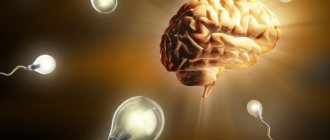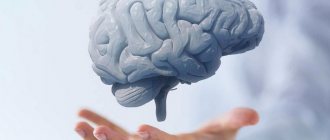More than feelings
Affect is a rather intense, but short-term outburst of emotional sensations. Examples: uncontrollable anger, rage, intense joy, despair. It absolutely completely subjugates the psyche, while creating a complex complex that predetermines the attitude towards what is happening.
The main feature is that the sense of reality is lost. A person may not understand what he is doing. Typically, people in this state make long, erratic movements. Another option is complete numbness, speechlessness. Often after such a stormy spectrum you can feel very tired and depressed.
Passion is a complex state, focused on a large number of sensations, given only to man. It can be focused both around a specific activity and around an object.
Basic functions of human emotions
- Regulatory function;
- The reflective function, which consists in a person’s ability to make a generalized assessment of certain events and determines the usefulness or harmfulness of facts. This function is formed in the process of communicating with other people and acquiring personal experience;
- Signaling or orienting function, consisting of monitoring one’s own behavior and activities;
- Incentive or stimulating function;
- Reinforcing function;
- A switching function that manifests itself in moments of competition between the motives of human activity.
- An adaptive function that helps a person adapt to the world around him;
- A communicative function that influences surrounding people and the process of organizing interaction with them.
Get paid for your student work
Coursework, abstracts or other works
Differences between emotions and feelings, their classification and functions
Emotions are a broader concept that is universal in nature for all people (they do not affect the historical nature), and may not have a substantive character.
Classification of feelings
Feelings can be divided into:
- Intellectual, arising in the process of study/scientific work.
- Moral, which reflect a person’s attitude to morality.
- Aesthetic, resulting from receiving aesthetic pleasure.
Sharing emotions
According to the sign of emotions there are:
- positive – joy, interest;
- negative - fear, anger and rage.
In terms of impulse and duration, mood and a stable emotional state help characterize all experiences.
According to the degree of activity of the body:
- Stenic shakes the body and improves mood (rage, delight).
- Asthenic relaxes and suppresses activity (melancholy, sadness, shame).
Functions of emotions
Emotions have their own functions:
- Grade. Allows you to quickly assess the situation and direct the processing of information in the right direction.
- Mobilization. Responsible for increasing the physical capabilities of the body when adrenaline is released into the blood.
- Trace formation. Appears after some exciting event.
- Compensating for information deficiency. In other words - intuition.
- Communication.
- The ability to empathize with others.
Theories of emotions
There are various theories of emotions:
- Evolutionary. Charles Darwin's theory, illustrating the similarities in behavior between humans and animals. Emotions emerged as a result of evolution as vital adaptive mechanisms.
- Rudimentary. According to it, human experiences are residual manifestations of full-fledged movements in the distant past.
- Psychoanalytic. According to Sigmund Freud, emotion is the residual energy of the nervous system that helps to adapt to society.
- Structural. James Paperz argued that sensation is controlled at a deep structural level.
- Organic. According to W. James and K. Lange, worries are conscious manifestations of functional changes at the level of the autonomic system.
- Biological. Peter Anokhin was sure that the entire emotional background is the key to satisfying physical needs.
- Informational. Developing the previous theory, Pavel Simonov considered emotional impulses as a model of behavior at a given time and place.
It would seem that seemingly simple feelings have many prerequisites. The spectrum of all human emotions cannot be measured. Studying them will help you learn to more deeply analyze and control your deepest feelings.
General characteristics of emotions
Definition 1
Emotions are mental processes that occur in the form of experiences and reflect the intensity of current motivation and the prospect of its satisfaction in a given specific situation.
There is another definition of emotional states.
Definition 2
Emotional states are functions of two variables:
- The person’s current motivation;
- There is a probability of its satisfaction.
A person’s emotional states are closely related to the process of regulating human activity as a whole and are reflected in a person’s behavioral reactions. Many researchers are of the opinion that a person’s emotional manifestations, on the one hand, are genetically determined, and on the other hand, they are socially predisposed.
Are you an expert in this subject area? We invite you to become the author of the Directory Working Conditions
Human emotional manifestations exist in the form of:
- a person’s internal subjective experiences;
- changes in human facial expressions, gestures and pantomime;
- characteristic changes in human behavior;
- speech changes;
- hormonal changes;
- emerging vegetative reactions.
Emotions are a universal reaction of the entire human body to the external influence of the surrounding world.
Fear and anxiety
Fear is the most dangerous of all emotions. It changes the direction of thoughts and behavior. Fear can also serve as a warning signal, strengthening social bonds, including flight to help and collective defense (Eibl-Eibesfeldt, 1971).
There are both innate (natural) and acquired (cultural) reasons or stimuli for fear. Congenital triggers (natural causes) of fear:
loneliness, unfamiliarity, heights, unexpected approach, change in stimulus, pain.
Sociocultural factors of fear:
a) the presence of something threatening, the absence of something that ensures safety,
10
b) events that do not occur in the expected place or at the expected time, the context of the event,
c) individual differences in temperament and predispositions,
d) the experience and age of the individual, suffering.
The causes of fear can be a person, events, conditions or situation that is a signal of danger.
Sometimes fear is not associated with anything specific; such fears are experienced as objective. The threshold for the occurrence of fear is influenced by: a) individual differences that have a biological basis, b) individual experience and c) the general sociocultural context of what is happening.
Subjective experience of fear.
Compared to other emotions, fear has the most restraining effect:
a) perception is limited,
b) thinking slows down, becomes narrower in scope and more rigid in form,
c) muscles tense,
d) the number of degrees of freedom in behavior is reduced.
Fear, depending on its intensity, is experienced as a premonition, uncertainty, and complete insecurity. There is a feeling of insufficient reliability, a feeling of danger and impending misfortune. A person feels a threat to his existence, which is experienced as a threat to the body, his mental “I”.
Development and socialization of fear.
Socioculturally based fears may be acquired through traumatic conditioning or through imitation of an adult who acts as a fear model. One of the most common ways parents use to socialize emotions is to use one emotion to influence another. Fear can be socialized through the use of shame.
The methods of socialization used by parents vary widely and usually include both humanistic and normative elements.
Humanistic socialization of fear: a) the feeling of fear is minimized, b) the secondary effect of embarrassment for one’s fear is removed, c) fear is compensated, d) learning to tolerate fear, e) learning to counter the source of fear.
It is necessary to ensure that the child does not have chronic fear, which is considered a symptom alien to health.
Interaction of fear with other emotions. WITH
subjective components in a situation of fear: tension, impulsiveness. Emotion profile for a fear situation: fear, interest, surprise, suffering.
Fear has a dual nature, which is caused by:
a) avoidance motivated by fear,
b) approach motivated by interest.
Therapy of fear.
Therapeutic techniques for managing and controlling fear based on learning theory:
a) relaxation, accompanied by repeated presentation of a number of stimuli, increasing in their frightening power,
b) presentation by patients in a state of relaxation of highly traumatic events selected on the basis of psychodynamic studies conducted by the therapist,
c) the classical modeling method (the therapist models the desired bold behavior in relation to objects that frighten a person).
Anxiety.
Unlike fear (an emotional reaction is associated with the anticipation of a certain damage due to a real objective danger), anxiety is “pointless”, since the stimuli or conditions that give rise to it are unknown to the individual. In a state of anxiety, the intensity of the emotional reaction to a stressful situation is disproportionately higher than the magnitude of the objective danger. Anxiety is a function of stress levels.
11
Anxiety as a process is a sequence of cognitive, affective, and behavioral reactions. The state of anxiety is accompanied by a cognitive reappraisal of the situation, the inclusion of avoidance mechanisms, and mental defense in order to minimize the resulting discomfort.
Anxiety as a condition is an unpleasant emotional state that is characterized by a feeling of tension, restlessness, and gloomy forebodings.
Anxiety as a personality trait is the tendency of an individual to experience a state of anxiety. This personality trait is not directly manifested in behavior; its level can be determined by how often and intensely the state of anxiety occurs.
"From love to hate one step"
Back in the 4th century BC. e. Aristotle accurately described the concept of feelings. Yes, they can be long-lasting and not. And what’s most interesting is that they can instantly acquire the opposite color. Feelings of love can turn into hatred, and trust into caution. And all this happens in just one instant, when a person assesses the situation and instantly makes a decision.
It is important to understand that the same feeling can manifest itself differently in different people. This is influenced by the individual’s character, goals, aspirations, as well as upbringing. In addition, many feelings are completely difficult to explain. Different people can describe the same word in a thousand different words. For example, one of the fundamental and common themes in world culture and art is: “What is love.” And answers to this question can be found in a huge number and in a wide variety of literature.
Communication, solving important problems and the role of intelligence
The next functions are communication and solving important problems. Of course, emotions help us communicate, convey feelings and moods. This is especially important between close people. For example, a mother, hearing a child crying, understands that he is in pain and rushes to help. Emotions allow us to understand how society evaluates a person. Sometimes a few glances from the crowd are enough to understand that there is something wrong with a person’s appearance. The same applies to the other side of the coin - approval, admiration.
Some psychologists place emotional processes on a par with intelligence. Only in this case this is its highest manifestation. Positive emotions and their occurrence increase the individual’s needs, while negative ones, on the contrary, reduce the intensity. This is how the necessary problems are solved. Although it often happens that emotions prevent you from making the right decision. And it concerns feelings. Attachment to another person makes you close your eyes to many things. This is why people so often forgive betrayals and betrayals.
Rational and emotional thinking are closely related. They allow us to gain experience and use it in the future. The “emotional brain” operates at the subconscious level. He can analyze the situation for a long time. Rational thinking, in turn, helps make decisions based on past experiences.
It often happens that an individual cannot choose who he needs to listen to. For example, emotional thinking tells him that he needs to relax and rest, the body’s strength is at its limit. The person feels really tired and overwhelmed. On the other hand, rational thinking comes in: “We need to work, we can’t fail this project.” And here you have to choose between two evils. The predominance of certain decisions in a person’s life also shows his attitude to various situations. A hard worker will always listen to rational thinking, and a lazy person will not restrain the expression of emotions.
It is for this reason that successful people have very strong and resilient characters. They always keep their emotions under control and know how to manage them. If emotional processes completely take over a person, his existence will be very reminiscent of the life cycle of an amoeba.
However, their function in people’s lives should not be underestimated. Emotions are also associated with that unconscious part, which is called intuition, feeling. The algorithm for its operation has not yet been fully studied. But nevertheless, scientists have concluded that intuition is closely related to a person’s experience and his emotional state. Complete control over your senses can shut down these amazing abilities.
The structure of emotional mental processes is quite complex and it is not always easy to explain. But people who are controlled by mood, not logic, are more creative and extraordinary individuals. They draw, sing, dance beautifully - and all thanks to the wide range of emotions that they feel every day.
Pessimism and optimism
According to scientists, it is these forms of assessing situations that clearly demonstrate the relationship between mental state and emotional processes. For example, the properties of temperament predetermine the emotional response to a particular situation. An optimist is a cheerful person. In any situation, he will look for his advantages. Accordingly, this will affect the mental state in a particular situation. For example, if his wallet is stolen, instead of the emotion “anger,” he will feel “regret.”
The exact opposite of an optimist is a pessimist. This person, even in the most harmless situations, sees danger, a problem, and, in general, negativity. He often experiences sadness, anger, and irritation. Pessimists are prone to frequent panic attacks and depression. Negative emotions predominate in their lives, which further aggravates their difficult life.
Affects
Have you ever heard that any crime was committed in a state of passion? These mental emotional processes are short-term and intense. They are accompanied by sudden movements, changes in facial expressions, and even disturbances in the functioning of certain organs. Affect is an unconscious objective assessment of a certain situation. This process is characterized by high intensity and short duration. It is also worth noting that affect arises in response to an already existing situation and is a protective function of the body. As a rule, the individual is not prepared for the events that begin to occur, which is why he falls into a stupor.
The beginning of this process is characterized by increased heart rate and breathing. Spasm of blood vessels, increased sweating, decreased salivation and impaired motor function are also possible. Affect is a unique process that allows us to determine whether a person is lying or telling the truth. This is the same principle that a lie detector works on. But in Ancient China, a person who was suspected of lying had to take a handful of rice into his mouth and listen to what he was accused of. If the rice remained dry, then he was lying, and if it was wet, he was telling the truth.
Intense affect disrupts perception and thinking, and can also cause clouding of consciousness and amnesia. Fear can be classified as such a mental emotional process. The person becomes numb, the heart begins to beat faster, the legs give way. Such a reaction to danger occurs reflexively and only if there was no emotion of “fear” before it.
Another quite interesting process to study is anger. The origin of the emotion is difficult to pinpoint, because for different situations, the reasons will be very different. But in general, it is a negatively colored affect that is directed against injustice or wrongness in actions.











